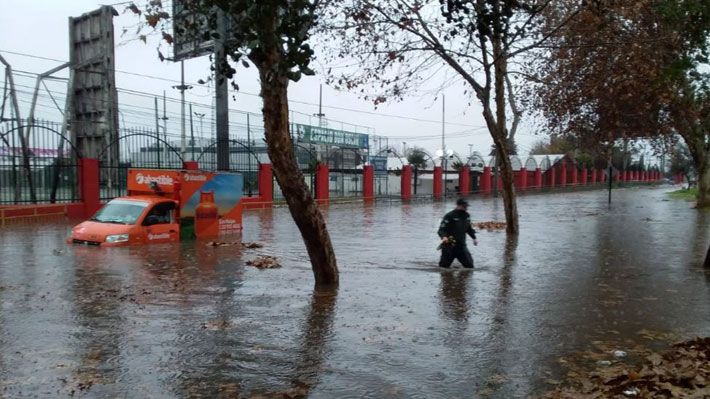The rain on June 29th broke the extreme drought trend that the Metropolitan Region has been presenting over the last 12 years. A group of researchers from the Research Center for Integrated Disaster Risk Management, CIGIDEN by its initials in Spanish, carried out a data analysis of the impacts of the meteorological phenomenon that occurred last weekend, on June 28th and 29th. This event might reoccur today.
The data analysis and interpretation was conducted by academics and researchers José Saldías (CIGIDEN) and Jorge Gironas (CIGIDEN and academic of the Catholic University of Chile), along with the data collected by Gabriel González, CIGIDEN deputy director, and Felipe Aron, researcher of the same scientific center. This allowed CIGIDEN researchers Francisca Roldán and Erik Jensen to create a map that gathers the impacts on infrastructure caused by the last rains, i.e. multiple flooding spots, road defects and closures across Santiago, rockfalls and channel overflows.
According to the geologist and UCN academic, Gabriel Gonzalez, everything seems to indicates that it was a severe storm. However, «the analysis of data reveals the rain was not a heavy storm, but it is a matter of accumulated precipitation in Quinta Normal (according to the DMC record) of 36.3 mm -36 liters per square meter – with high intensity of 7 mm in 1 hour and a minor intensity 2 mm in 15 hours, which indicates that the storm resembles a rain with a return period of between 5 and 2 years».
Minor storm
The Urban Element Design Manual classifies this type of rain as a minor storm and stipulates that there should be no system collapse. «Then,» the researcher José Saldias says, «the multiple malfunctions observed show a design defect and reflect that the city is not able to withstand a severe storm, for instance, a rain with extended return periods. This is a wake-up call to improve Santiago’s resilience urgently.
Many floodings that may occur again with the rains forecasted for today are spatially related to channels. «The loss of the natural soil infiltration capacity and the absence of an efficient evacuating system for rainwater also contribute to the increased impact of this storm,» the geologist Felipe Aron affirms.
The map –which will soon be available on an interactive online platform– says the geologist Francisca Roldan, «allows us to visualize in a single space the impacts such as the activation of streams at foothills, floodings, river, and channel overflows, among others, on the Metropolitan Region. Identifying those vulnerable areas that should be strengthened for future events, «this map is a tool designed for disaster risk management,» says the researcher.
